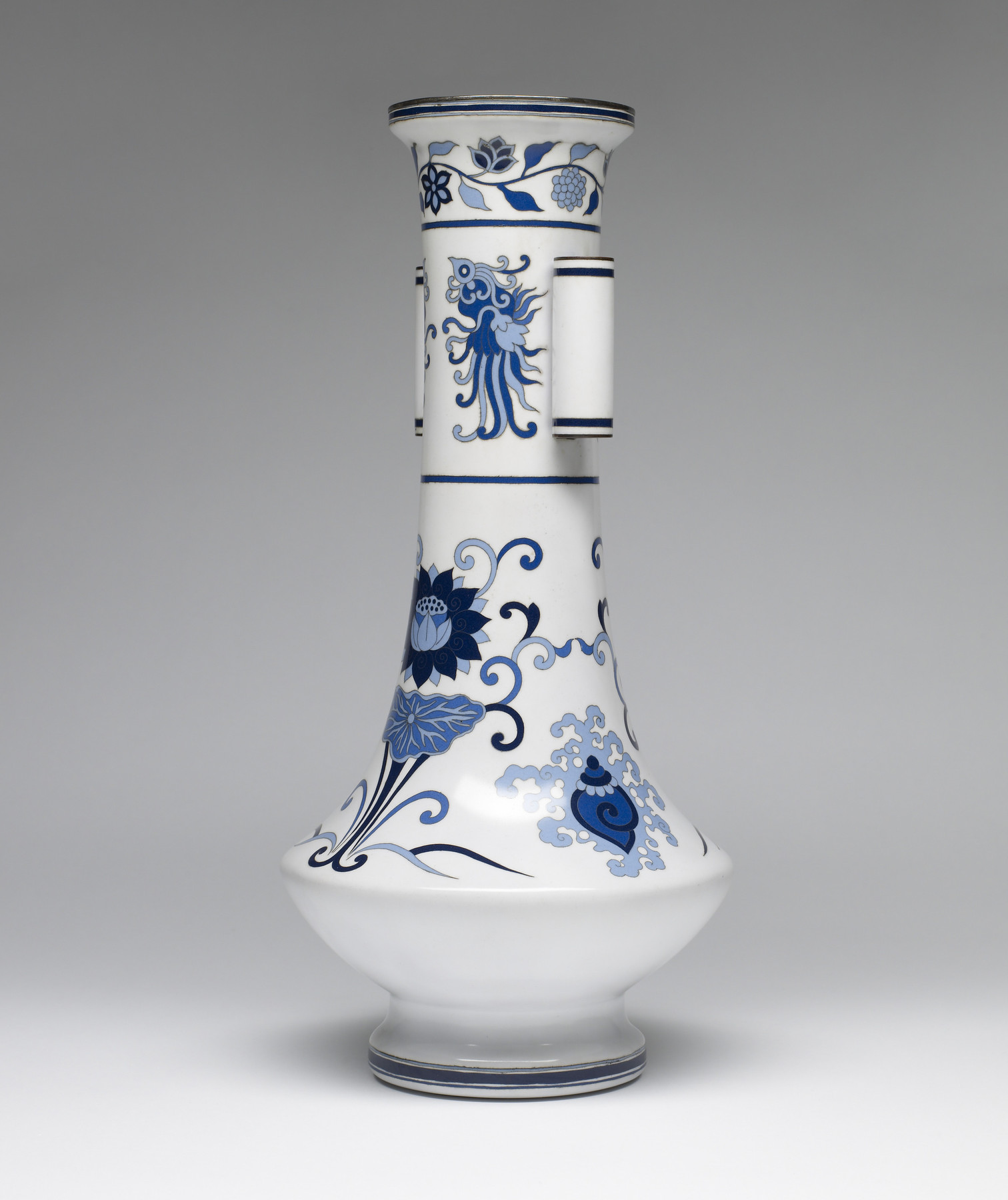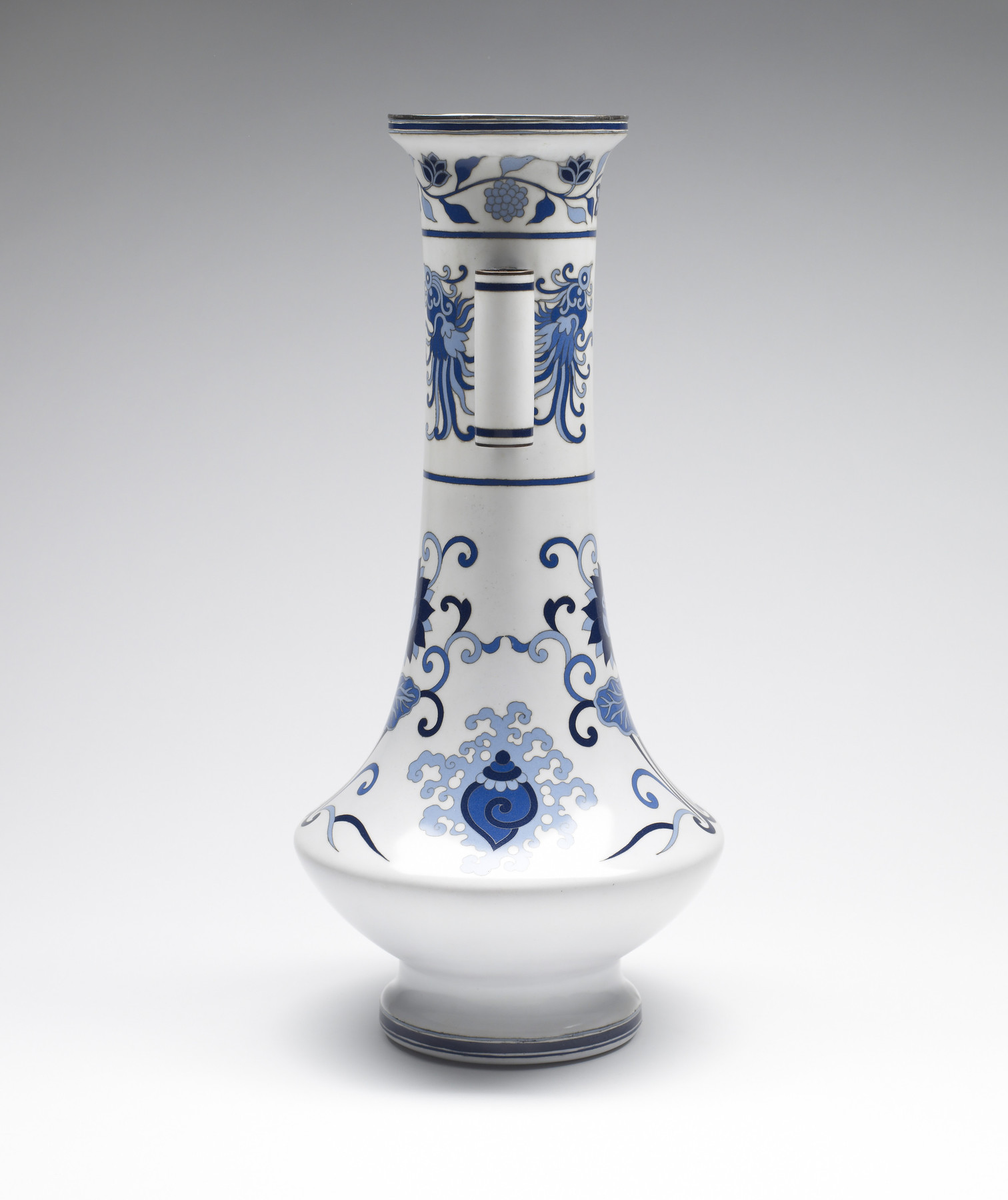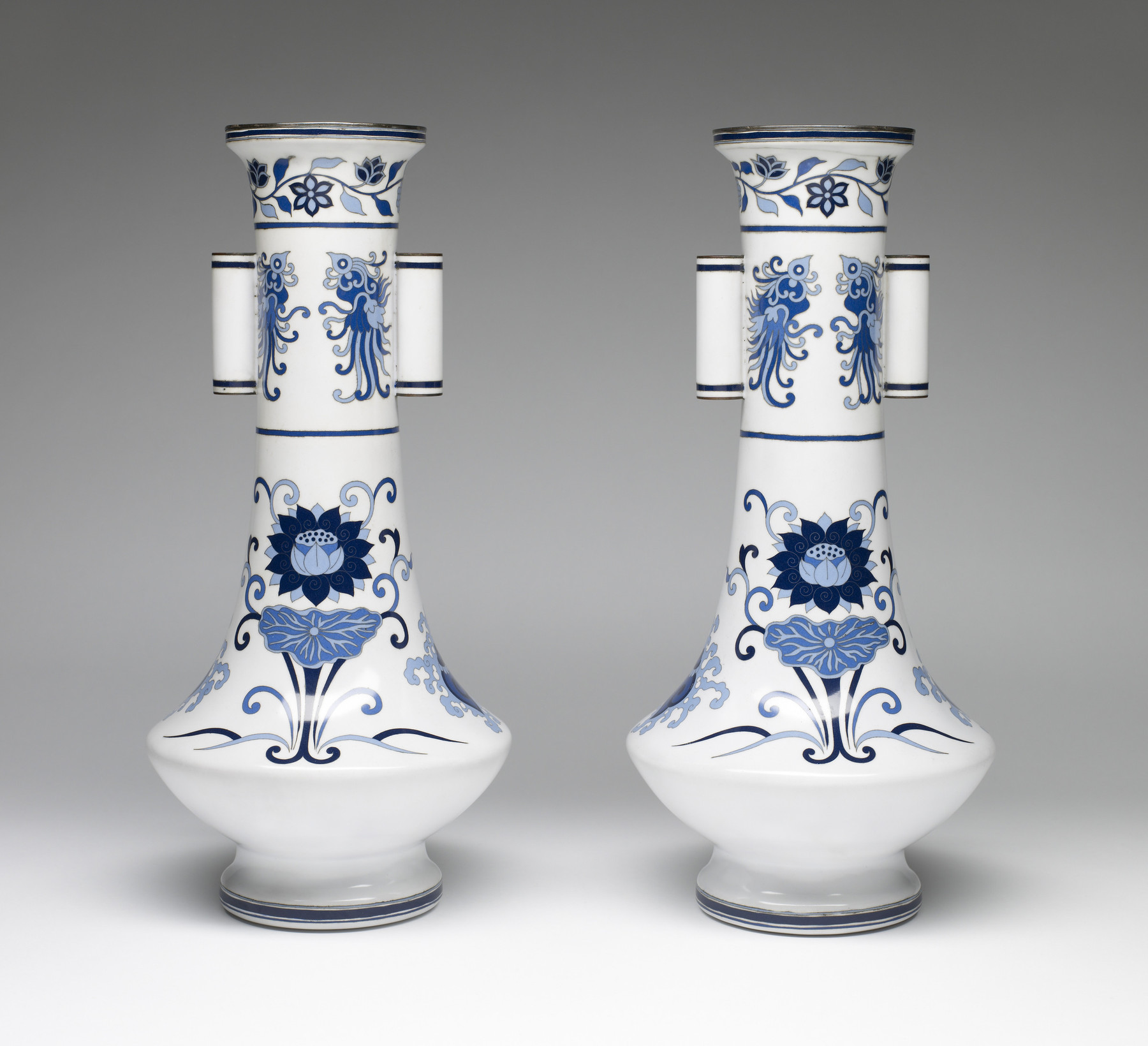One of a Pair of Vases Decorated with Blue and White Ceramic Designs
Hattori has adopted the form of the Chinese "arrow vase" for these two decorative pieces. An arrow vase is a type of vessel originally used for the ancient drinking game "touhu," or pitch-pot. Participants attempted to throw arrows into the tubular cylinders attached on the elongated neck of a vase or pot. This form became a standard shape for decorative vases in China and in Japan. The surface decorations on these enameled vases also find their origins in China. Floral patterns, scrolling tendrils and cloud forms and stylized archaizing dragons fill the surfaces of these vases. The dragon forms are prefigured by incised decoration on bronzes and jades, while the rich blues are created in imitation of the underglaze cobalt decoration seen on porcelains dating back to the 13th century.
Hattori's decision to decorate these cloisonné pieces in this manner also points toward the Japanese traditions of underglaze blue porcelain manufacture made famous by the Hirado factories and the many porcelain kilns in the city of Arita not far from the famous port of Nagasaki. It was from this port that Japanese blue and white porcelains made their way to Europe where they joined Chinese wares to inspire the production of Delft ware in Holland and Josiah Wedgewood's decorative blue and white ceramics in England. By 1900, these traditions both in Asia and in Europe were very familiar to collectors of decorative enamels. Hattori was able to draw on his models in equal measure to create a pair of vases that succinctly points toward traditions in both the East and the West.
Inscription
Geographies
Japan (Place of Origin)
Measurements
H: 15 9/16 × Diam: 7 3/16 in. (39.5 × 18.2 cm)
Credit Line
Gift of Stephen W. Fisher in memory of Kenneth A. Willaman, 2013
Location in Museum
Not on view
Accession Number
In libraries, galleries, museums, and archives, an accession number is a unique identifier assigned to each object in the collection.
In libraries, galleries, museums, and archives, an accession number is a unique identifier assigned to each object in the collection.
44.993.1















